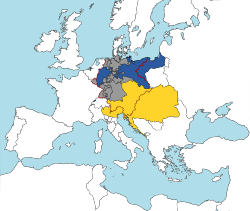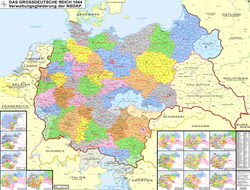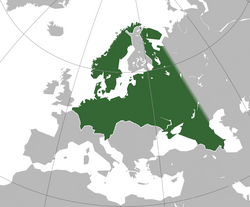Pan-Germanism
Pan-German Movement (from
Pan-Germanism Media
Map of German dialects in Central Europe before 1938
1908 map of the Continental West Germanic dialect continuum
German-speaking areas in Central and Eastern Europe in the first half of the 20th century (1925 map)
The German Confederation in 1820. Territories of the Prussian crown are blue, territories of the Austrian crown are yellow, and independent German Confederation states are grey. The red border shows the limits of the Confederation. Both Prussia and Austria controlled non-Confederation lands.
Administrative division of Nazi Germany, following the annexing of Austria, Sudetenland and others to form the Greater German Reich as of 1944
Map showing Nazi German plans, given to Sudeten Germans during the Sudeten Crisis as part of an intimidation process. Re-published in the British socialist newspaper Daily Worker on 29 October 1938.
Boundaries of the planned "Greater Germanic Reich" based on various, only partially systematised target projections (e.g. Generalplan Ost) from state administration and the SS leadership sources
Greek: pān, all, and Germania) is a nationalist ideological and political movement promoting the unification of all German-speaking peoples of Europe.







